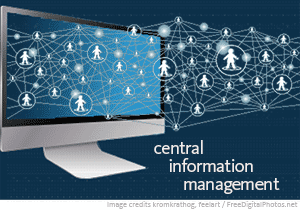
Employers struggle with the question of "How do you begin to wrap your arms around this thing called ADA?" – facing challenges from the Americans with Disabilities Act and the ADA Amendments Act (ADAAA).
Often, employers face two common compliance gaps. The first gap is the lack of a well-defined accommodation process and/or neglect in following the process consistently. Denise Fleury addressed this important issue for employers in a three-part ADA/ADAAA series on our blog: part 1, part 2, part 3.
The second common gap deals with the ability of the employer's information management platform to support the previously discussed accommodation process. Here there is a wide range of practices, often inconsistent even within the same organization. Some departments may collect and track needed data using an Excel spreadsheet, some may inconsistently report employee requests to human resources and some managers may just act on the spot, without any documentation. Any of these options can leave the organization unable to completely implement its formal processes, and open it to costly legal action from employees and regulatory enforcement agencies.
The need for an effective, centralized information platform begins when an employee requests a job accommodation because of a disability that impedes their ability to perform all required job functions. This request sometimes arises as part of a claim for short term disability, long term disability benefits, FMLA, or workers' compensation, or can stem from a condition which never qualifies for any of these other benefits.
What happens once an employer is notified of a request for accommodation critically impacts how they are viewed in regard to good faith compliance with required government mandates, including ADA. A centralized information platform which supports the accommodation process gives an employer a significant advantage in the current regulatory environment. Ideally, all conversations and communications are recorded with date and time stamps within the platform. Compliance is both easier to achieve and, perhaps more importantly, clearly able to be demonstrated when an employer has this kind of system.
A centralized information management system tracks and documents each step in the accommodation process. This begins with an employee’s request for accommodation and continues until a decision is made regarding the ability to accommodate the employee. Extensive documentation is required as part of the process:
- Conversations with the employee
- What and how accommodations were analyzed and considered in the response to the employee's request
- Medical documentation substantiating the accommodation
- Acceptance of the accommodation including length of time and specifics of the accommodation
- In the case of a denial, strong rationale supporting the reasons for denial including why the request was not reasonable
Much of this information is highly sensitive and needs to be tightly managed from an accessibility standpoint in order to comply with privacy laws especially those under the Health Insurance Portability and Accountability Act (HIPAA).
Often during the accommodation process, FMLA or other leave benefits may come into play. Ideally, having all of that information available within the same platform ensures better concurrent monitoring for the employer and employee. Any system should be easily and appropriately accessible to managers, human resources and to the employee.
The manager tasked with the case needs to be able to look back historically to see what has happened. The best platform is not just a way to document the case, but can become an action tool. The system should coordinate multiple mandates and identify specific milestones in the process where the employer should take action. This use ensures not only compliance, but also an opportunity to plan.
The case for an effective central information platform touches upon a variety of issues:
- ADA regulations have continued to evolve based on new legislation and court decisions. The employer needs to use a platform that can easily and reliably adjust to support process changes in light of these developments.
- Employee benefit policies are intertwined and probably affect ADA compliance issues. A central platform can create "hooks" into the processes of multiple benefits and mandates to identify important events that could spur action.
- Employer policies, federal and state regulations continue to become more intertwined and dynamic. Relying on manual tracking methods may be a formula for compliance violations and increased risk. A robust, multi-faceted, centralized information platform that supports multiple operational processes and enables comprehensive documentation can greatly reduce that risk.
- The potential for internet-based interactivity between employees and employers will improve the platform and make it more accessible. Many employers are insufficiently aware that FMLA and ADA regulations expect the employee to participate in good faith and take some initiative on their own. Sedgwick's viaOne® suite of tools including mobile technology is an example of an interactive internet-based tool that is easy to use for both employees and employers.
The heart of a successful ADA/ADAAA compliance program is ensuring you have the right resources to provide a consistent, compliant process supported by a dynamic centralized information platform which addresses the increasingly complex government accommodation regulations faced by all organizations. We'd like to understand more about the challenges you face and the ways you address ADA/ADAAA compliance. Join the conversation by leaving us a comment below.
Shawn Johnson, SVP, Disability Services